A Glimpse Into the U.S. Warfare State Abyss
To climb out or sink in endlessly—that is the question.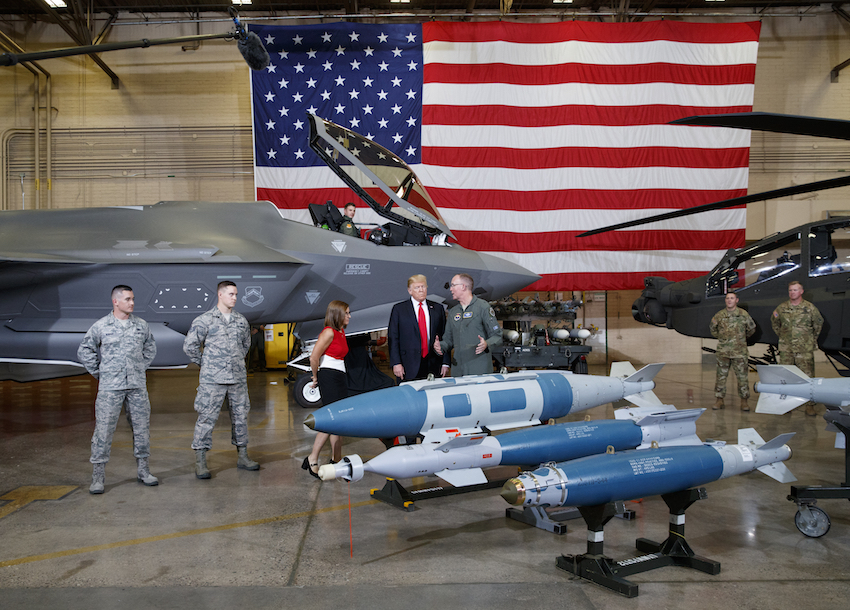 President Trump participates in a Defense Capability Tour with military personnel at Arizona's Luke Air Force Base on Oct. 19. (Carolyn Kaster / AP)
President Trump participates in a Defense Capability Tour with military personnel at Arizona's Luke Air Force Base on Oct. 19. (Carolyn Kaster / AP)
Perpetual War
In the 242-year existence of the U.S. (1776–2018), the nation has been involved in 79 wars.
If we define a “war year” as one during which the U.S. was involved in war part or all of the year, and if we define a “peace year” as one during which the U.S. was not involved in war, then the record shows there were 224 war years (92.5 percent) and only 18 peace years (7.5 percent).
There have been 45 presidents. If we define a “war president” as one whose entire term included at least one war year, and if we define a “peace president” as one whose entire term included only peace years, then the record shows there were 45 war presidents and no peace presidents!
In addition to the aforementioned 79 wars, the U.S. is involved in many “secret wars.” In 2017, U.S. Special Operations forces, including Navy SEALs and Army Green Berets, deployed to 149 countries around the world, according to figures provided to TomDispatch by U.S. Special Operations Command. That’s about 75 percent of the nations on the planet and represents a jump from the 138 countries that saw such deployments in 2016 under the Obama administration. It’s also a jump of nearly 150 percent from the last days of George W. Bush’s White House. This record-setting number of deployments comes as American commandos are battling a plethora of terror groups in quasi-wars that stretch from Africa and the Middle East to Asia.
Prisoner of the Military-Industrial Complex
President Dwight D. Eisenhower, in his farewell address to the nation on Jan. 17, 1961, warned against a formidable union of defense contractors and the armed forces:
In the councils of government, we must guard against the acquisition of unwarranted influence, whether sought or unsought, by the military-industrial complex. The potential for the disastrous rise of misplaced power exists and will persist.
We must never let the weight of this combination endanger our liberties or democratic processes. We should take nothing for granted. Only an alert and knowledgeable citizenry can compel the proper meshing of the huge industrial and military machinery of defense with our peaceful methods and goals, so that security and liberty may prosper together.
We shall see below how much his wisdom has been ignored.
‘The Greatest Purveyor of Violence in the World Today: My Own Government’
“Beyond Vietnam: A Time to Break Silence” was a speech delivered by Dr. Martin Luther King Jr. on April 4, 1967, at Riverside Church in New York City.
MLK proclaimed that “my conscience leaves me no other choice,” and he described the war’s destructive effects on both America’s poor and Vietnamese peasants, and insisted that it was morally imperative for the United States to take radical steps to halt the war through nonviolent means.
He recounted his “experience” in the ghettos of the North over the last three years—especially the last three summers:
As I have walked among the desperate, rejected and angry young men I have told them that Molotov cocktails and rifles would not solve their problems. I have tried to offer them my deepest compassion while maintaining my conviction that social change comes most meaningfully through nonviolent action. But they asked—and rightly so—what about Vietnam? They asked if our own nation wasn’t using massive doses of violence to solve its problems, to bring about the changes it wanted. Their questions hit home, and I knew that I could never again raise my voice against the violence of the oppressed in the ghettos without having first spoken clearly to the greatest purveyor of violence in the world today—my own government. For the sake of those boys, for the sake of this government, for the sake of hundreds of thousands trembling under our violence, I cannot be silent.
The historical record shows that MLK’s impassioned and humane plea for nonviolence has fallen on the deaf ears of the military-industrial complex.
Consequences of the Out-of-Control Military-Industrial Complex, the American Empire and the National Security/Surveillance State
Department of Defense (DOD)
The defense industry is a partnership between government agencies and the private-sector industry involved in research, development, production and service of military programs, arms, personnel and facilities.
DOD is the largest employer in the world. It has 3.2 million employees, including 1.6 million active-duty military personnel, of which 250,000 staff foreign U.S. military bases. There are 801,000 in the Coast Guard and Reserves and 800,000 civilian employees.
DOD defense contractors include over 50,000 corporations. The total employment is just under 2,000,000.
DOD has contractors in 190 of the 200 nations on earth.
There are between 1,077 and 1,180 U.S. military bases dotting the globe. In each of 80 different countries, there are at least one or more bases.
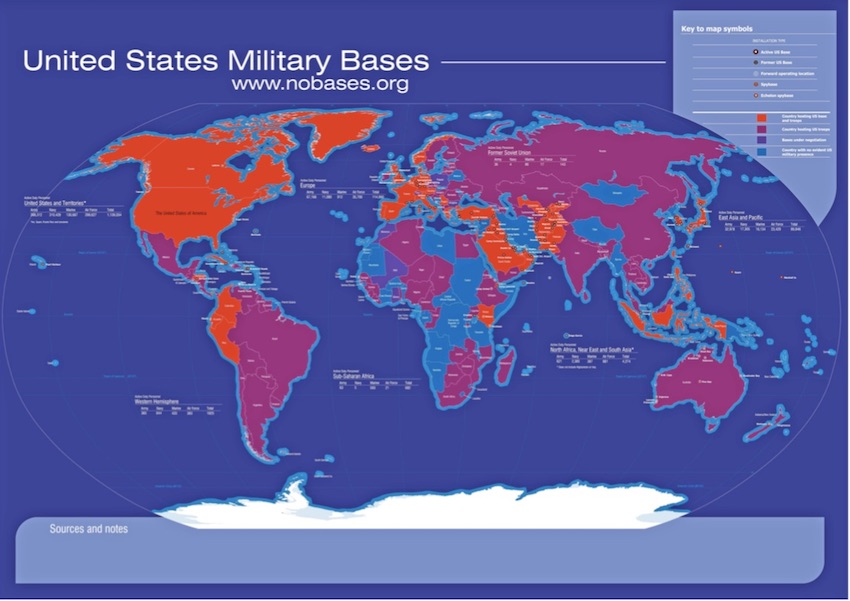
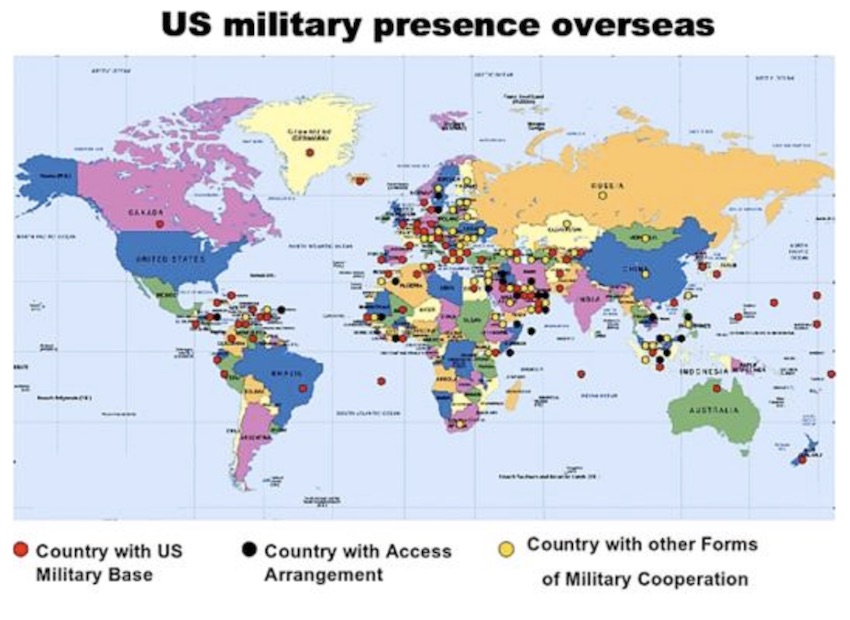
Military Spending
In every year of the existence of the Social Security and Medicare trust funds, the Federal Insurance Contributions Act (FICA), also called the “payroll tax” (paid by both employee and employer), is enough to pay full benefits to all beneficiaries and leaves a surplus. The surplus ($3.044 trillion in fiscal year 2017) may be borrowed (with IOUs) to pay for the set of all programs except Social Security and Medicare. We partition this set into three categories: Military (M), Interest on National Debt (I) and All Other (AO).
We examine the 17-fiscal-year (Oct. 1 to Sept. 30 of the following year) period from 2001 to 2017.
The following table shows non-FICA receipts, outlays for M, I and AO, shortfalls, national debt, annual deficits, and program outlay percentages relative to non-FICA outlays. Just below the table is a summary of vital facts.
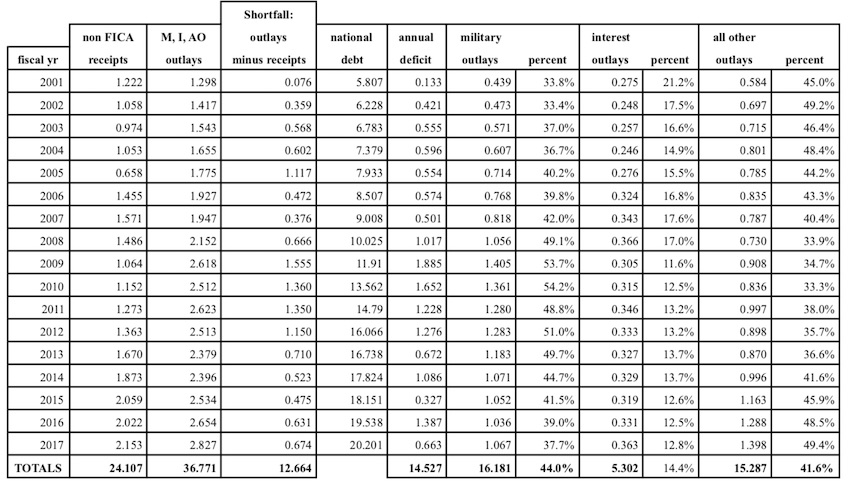
1. The national debt increased by $14.327 trillion, from $5.674 trillion to $20.201 trillion, a 356 percent increase. The equivalent annual compound interest rate is 7.47 percent.
2. Military spending exceeded the national debt growth by $1.654 trillion, an 11.4 percent increase.
3. The percentage of federal outlays for all other programs was 41.6 percent ($15.267 trillion); the percentage for military outlays was 44.0 percent ($15.181 trillion); the percentage for interest outlays was 14.4 percent ($5.302 trillion); the percentage for military and interest outlays combined was 58.4 percent ($21.683 trillion).
4. In March 2018, the federal budget was signed by President Trump. The War Resisters League (WRL) reported that the military spending for fiscal years 2018 and 2019 is, respectively, $1.450 and $1.501 trillion. For the 19 fiscal years spanning 2001–2019, the analysis of all federal budgets by WRL shows that 80 percent of annual interest outlays are due to military spending. It comes to $23.374 trillion. Here is the table:
Amounts in trillions of dollars (*total: past includes 80 percent interest on national debt due to military spending)

Military Spending of the U.S. Versus All Other Countries
In 2016, the U.S. spent $1.036 trillion, which is 3.66 times more than the combined total of $0.2829 trillion for China ($0.2157) and Russia ($0.0672).
In 2016, the U.S. spent 1.6 times more than the rest of the world combined ($0.650 trillion).
Nuclear Weapons Spending
Between 1940 and 1996, the U.S. government spent at least $9.08 trillion in present-day dollars on nuclear weapons, including platforms development (aircraft, rockets and facilities), command and control, maintenance, waste management and administrative costs. Since 1945, the United States produced more than 70,000 nuclear warheads, which is more than all other nuclear weapon states combined. As of 2017, the U.S. has an inventory of 6,800 nuclear warheads; of these, 2,800 are retired and awaiting dismantlement and 4,018 are part of the U.S. stockpile. Of the stockpiled warheads, the U.S. stated in its April 2017 New Start declaration that 1,411 are deployed on 673 ICBMs, SLBMs and strategic bombers. Currently (2018), Trump wants to spend $1.2 trillion on upgrading the nuclear arsenal.
Destruction, Deaths and Casualties Caused by U.S. Military Forces
1. Estimates of the number of American Indians killed by the U.S. government range from 1 to 4 million. The first estimate was sponsored by the United States government, and, while official, does not stand up to scrutiny and is therefore generally discounted. The second study was not sponsored by the U.S. government but was done by independent researchers. This study estimated populations and population reductions using later census data. The figure was at least 10 million. Two figures are given, both low and high, at between 10 and 14 million.
2. Since the end of World War II, U.S. military forces were directly responsible for approximately 10 to 15 million deaths during the Korean and Vietnam Wars and the two Iraq wars. The Korean War also includes Chinese deaths, while the Vietnam War also includes fatalities in Cambodia and Laos.
There also are proxy wars for which the United States is responsible. In these wars, there were between 9 million and 14 million deaths in Afghanistan, Angola, Democratic Republic of the Congo, East Timor, Guatemala, Indonesia, Pakistan and Sudan.
But the victims are not just from big nations or one part of the world. The remaining deaths were in smaller ones, which constitute over half the total number of nations. Virtually all parts of the world have been the target of U.S. intervention.
The overall conclusion reached is that the United States most likely has been responsible since WWII for the deaths of between 20 million and 30 million people in wars and conflicts scattered over the world.
To the families and friends of these victims it makes little difference whether the causes were U.S. military action, proxy military forces, the provision of U.S. military supplies or advisers, or other causes, such as economic pressures applied by our nation. They had to make decisions such as finding lost loved ones, whether to become refugees, and how to survive. (James A. Lucas, Global Research, April 15, 2018)
3. During the war with North Korea (1950-1953), U.S. military forces killed 1.8 million people (20 percent of the 9.726 million population in 1950). U.S. combat deaths were 33,000, so the ratio is 55 to 1. It destroyed 75 percent of North Korea’s cities and villages, including 75 percent of the capitol, Pyongyang. The U.S. dropped a total of 635,000 tons of bombs on Korea, including 32,557 tons of napalm. By comparison, 503,000 tons were dropped in the Pacific theater during World War II, and 864,000 tons were dropped on North Vietnam.
4. The Vietnam War occurred in Vietnam, Laos and Cambodia from 1 November 1955 to the fall of Saigon on 30 April 1975. There were 3.8 million violent war deaths, of which 2 million were civilian. The U.S. dropped over 7 million tons of bombs (flown in 3.4 million U.S. and South Vietnamese sorties) on Indochina during the war—more than triple the 2.1 million tons of bombs the U.S. dropped on Europe and Asia during all of World War II, and more than 10 times the amount dropped by the U.S. during the Korean War. Five hundred thousand tons were dropped on Cambodia, 1 million tons were dropped on North Vietnam, and 4 million tons were dropped on South Vietnam. On a per capita basis, the 2 million tons dropped on Laos make it the most heavily bombed country in history, amounting to a ton for every person there. The amount of ammunition fired per soldier was 26 times higher than in World War II.
Climbing Out of the Abyss
So, you see, we are a warfare state, and are hopelessly addicted to war. What can we do to end this madness?
We the People of the United States, in Order to assure a non-violent and humane world society, do create a Department of Peace to establish Justice, Liberty and the General Welfare of all.
The Department of Defense, as decades of history show, is a euphemism for Department of War. By contrast, a Department of Peace would be dedicated to the resolution of conflicts by exhaustive, peaceful, nonviolent, non-threatening means, rather than by the use or threats of force if “irresolvable” impasses in negotiations ultimately occur. In short, let’s agree to disagree and coexist without killing each other.
A national commitment is essential in order to transform our horrendous, astronomical, waste-infested war economy to one that fulfills the multitude of severely neglected needs of the people.
A future outlay of at least $23.374 trillion (= military/national debt spending for the 19-fiscal-year period 2001 to 2019) would go a long way in providing the trillions of dollars to pay for: • Free tuition for every enrolled post-secondary student. • Free job training for anyone who seeks employment. • Rebuilding the crumbling infrastructure of America. • Medicare for all citizens. • Free internet service for all households. • Free mass transit for all urban regions. • Free U.S. Postal Service. • Conversion from fossil fuel usage to clean energy sources (i.e., wind, solar). • Restoration and creation of national parks, wilderness areas, and national monuments with free access to all. •Establish regulations for organic farming and the elimination of harmful pesticides.
This long-overdue transformation would enable all to thrive and enjoy the benefits of a much more humane society.
Are you ready to start?
If not now, when?
Independent journalism is under threat and overshadowed by heavily funded mainstream media.
You can help level the playing field. Become a member.
Your tax-deductible contribution keeps us digging beneath the headlines to give you thought-provoking, investigative reporting and analysis that unearths what's really happening- without compromise.
Give today to support our courageous, independent journalists.


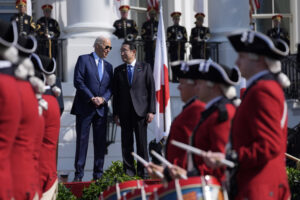
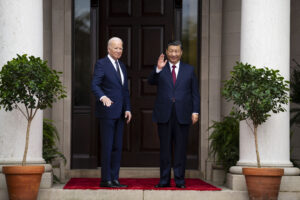


You need to be a supporter to comment.
There are currently no responses to this article.
Be the first to respond.